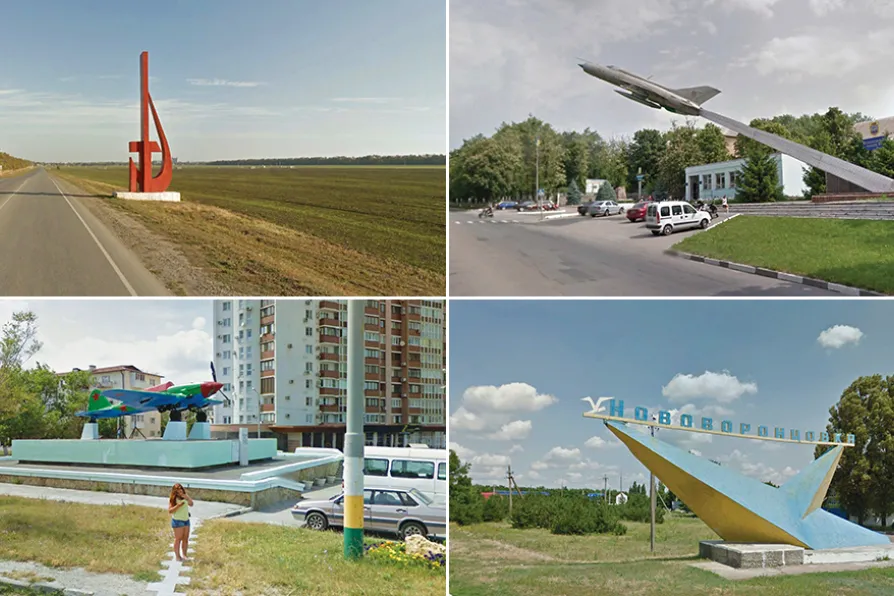RICHARD MURGATROYD enjoys a readable account of the life and meditations of one of the few Roman emperors with a good reputation
Soviet Signs and Street Relics by Jason Guilbeau
Poignant reminders of an optimistic Soviet past in Google-derived images

 (Left to right, from top) Zernograd, Russia; Vasylkiv, Ukraine; Jalal-Abad, Kyrgyzstan; Vorkuta, Russia; Novovorontsovka, Ukraine; Yakovlev fighter plane in Novosibirsk, Russia; Vorkuta, Russia; Dnipropetrovsk Oblast, Ukraine and Shatki n/Nizhny Novgorod
(Left to right, from top) Zernograd, Russia; Vasylkiv, Ukraine; Jalal-Abad, Kyrgyzstan; Vorkuta, Russia; Novovorontsovka, Ukraine; Yakovlev fighter plane in Novosibirsk, Russia; Vorkuta, Russia; Dnipropetrovsk Oblast, Ukraine and Shatki n/Nizhny Novgorod
WHILE “travelling” across the former territories of the Soviet Union by using Google Street View, photographer Jason Guilbeau zeroed in on images that fired his imagination.
He then stripped them of their navigational markers to eliminate visual interference and has come up with a mode of “travel” in which the sensorial experience of smells, weather, tactile sensations and sounds, including that of human voice, are absent.
But does it matter? Evidently not to Guilbeau, who seems unconcerned by the distance in both time and space to the subjects invoking his curiosity.
Similar stories

MICHAL BONCZA, MARIA DUARTE and ANGUS REID review The Other Way Around, Modi: Three Days On The Wing Of Madness, Watch The Skies, and Superman

RON JACOBS recommends a painstaking study of the communists and revolutionaries who congregated in Moscow after 1917

NICK WRIGHT delicately unpicks the eloquent writings on art of an intellectual pessimist who wears his Marxism lightly

MICHAL BONCZA recommends a compact volume that charts the art of propagating ideas across the 20th century










